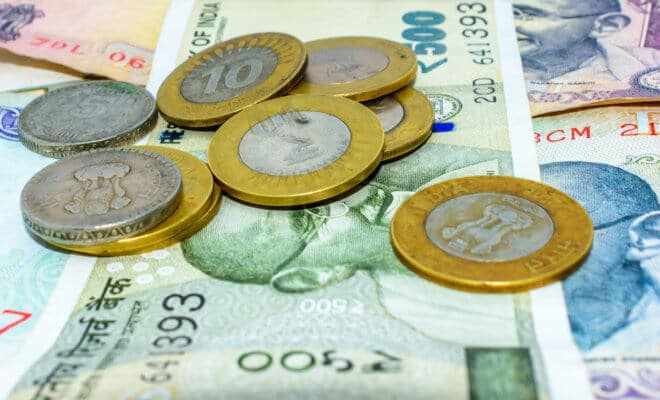Business
India Can’t Have It All

Photo Credit: Bigstock
The political fallout of a sliding rupee and higher fuel prices is particularly problematic for Modi because his election campaign in 2013-14 was memorably brutal about the similar predicament in which the last government found itself.
A couple of things happened last week in India that deserve a bit of attention — mostly because they reveal how deep the country’s structural problems go and how few good options the government has left. The first was the Reserve Bank of India’s decision to hold interest rates steady even though the rupee had hit record lows against the U.S. dollar. And the second was the federal government’s attempt to suppress rising fuel prices.
The RBI’s steadiness on rates was born of its belief that inflation was close enough to the bank’s target zone. Now, you might disagree with this belief — as I do — but there’s no question that the central bank’s monetary policy committee was doing its job as it saw it.
The problem lay in the reaction to the RBI’s decision. Naturally, the rupee fell even further; markets had hoped for higher interest rates that would have encouraged foreign investors not to sell their rupee-denominated assets. A chorus of voices, some within the political establishment, began to complain that the RBI was ignoring the rupee, ignoring threats to growth and so on.
That’s no longer the RBI’s job, however. One of the big institutional changes of the past few years in India has been the creation of a legal mandate for the RBI to target inflation and nothing else. Rational monetary policy, made along predictable lines, is a good thing. Hopefully this won’t lead to another round of tension between the RBI in Mumbai and Finance Ministry bureaucrats in New Delhi. The government tried various measures last month to prop up the rupee.
If the government is so concerned about the rupee, one would think it would be pushing to raise, not lower import prices. Instead, last week officials told state-run (but publicly traded) oil companies to reduce prices by a rupee a liter and to absorb the losses themselves.
The government also cut taxes on fuel by Rs. 1.50 a liter, even though it can ill afford the hit to revenue: It’s already run through almost 100 percent of its targeted fiscal deficit in just the first six months of the financial year. A dozen states run by the ruling Bharatiya Janata Party — which looks vulnerable in fast-approaching state elections — announced that they were matching the federal government’s tax cuts with even larger ones of their own.
Such actions undercut the claim, made by officials earlier in Prime Minister Narendra Modi’s term, that they’d effectively deregulated fuel prices. More important, the approach is schizophrenic. Making imports such as fuel cheaper for consumers will just increase import demand, meaning more Indians will want to exchange their rupees for dollars.
To stabilize the current account deficit and the rupee, the government should instead be incentivizing Indian consumers, through the price system, to reduce their demand for imports. Ironically, it’s doing precisely that by repeatedly raising tariffs on imports other than fuel.
The unfortunate truth is that the government is simply being buffeted by politics one way and the other. An opposition campaign about high fuel prices appeared to be gaining steam, so the government lowered them. Social media was laughing at the rupee’s fall, so the RBI was pressured to step in. Jobs aren’t being created because manufacturing in India is still uncompetitive, so tariffs are being raised to force import-substituting factories to open. Any government that thinks it can control tariffs, the rupee and inflation, while containing the fiscal deficit, is in for a nasty surprise.
The political fallout of a sliding rupee and higher fuel prices is particularly problematic for Modi because his election campaign in 2013-14 was memorably brutal about the similar predicament in which the last government found itself. And, when global oil prices fell after he was elected in May 2014, Modi famously took credit. He’s got few sympathizers now that he is, effectively, facing exactly the same chorus of complaints that he himself orchestrated five years ago.
There’s blame to go around, though. Opposition leaders demanding cheaper fuel and a stronger rupee, and government officials pretending they can provide both, are all perpetuating harmful myths about the economy. Meanwhile, the core problem is ignored: Indians’ addiction to cheap imported fuel is the economy’s greatest structural weakness. Whenever oil prices go up, the rupee will have to slide; fuel prices will have to rise relative to others; and the central bank will have to worry about inflation.
There’s only one way out: Invest in renewables, in dams, in public transport and in a genuinely effective social safety net instead of subsidies. Accepting an addiction is the first step to fixing it. We haven’t quite gotten there yet.
Sharma is a Bloomberg Opinion columnist. He was a columnist for the Indian Express and the Business Standard, and he is the author of “Restart: The Last Chance for the Indian Economy.”
(c) 2018, Bloomberg Opinion

You must be logged in to post a comment Login